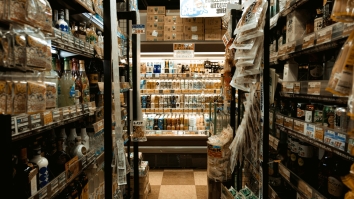
Does more self-service mean less work for people?
Diebold Nixdorf debunks myths on the rising use of self-service technology.
The rise of technology gave a rise to the automation of a lot of processes. Work that needed a human touch was soon replaced by high-powered AIs and computers.
This is especially true in the retail business as stores rely more on technology to give consumers a more friction-free shopping experience. With this reliance, fear started to grow that, soon, robots would replace workers in the store.
Diebold Nixdorf’s Director of Advance Self Service Solutions Matt Redwood, however, debunked that theory in the recently concluded virtual fireside chat Self-Service: The Next Level Retail Evolution.
Redwood explained that in the early days there was a bit of resistance and reluctance amongst consumers as they thought that self-service devices would take away jobs from staff members they interacted with on a daily basis. But as time goes by, consumers are the ones starting to demand self-service.
He added that the issue with staff in retail stores has gone away.
“A lot of retailers now actually don't look at reducing staff in stores or removing staff in stores. It's about redistributing staff. So rather than having a member of staff behind the checkout scanning items, deploying self-service actually frees up that member of staff to be in the aisles, delivering the consumer experience where it really counts,” Redwood said.
This makes it easier for stores to restock or even help direct consumers to the right aisle as they shop. Redwood said these things tend to be noticed by consumers as they go around the store.
“Getting your front-end efficiency right, with the right combination of self-service devices, not only provides very flexible and efficient operations but also frees up your member of staff to deliver the consumer experience where it really matters: in the aisles,” Redwood added.
Boosted demand
In the last two years, mature markets continue to accelerate the use of the move to self-service.
The rising trend is not driven by retailers alone, but consumers themselves continue to demand self-service from the stores.
Regional Vice President and Managing Director of Diebold Nixdorf’s Retail Segment in the Asia Pacific Vipin Kalra explained that three key trends boosted the demand for self-service technology.
“First, the blending of channels; and, of course, the big shift was digital channels. The other point is that because of the hygiene requirement in most of our markets, there is a clear preference for low touch and self-service customer journeys in physical stores. Third, there is definitely a shift towards electronic modes of payment, and less and less use of cash,” Kalra said.
Kalra added that with these three things together, retailers must be ready to deploy a flexible software platform that enables the move towards digital.
Retailers for their part must keep in mind that the software or platform they use for their self-service devices can be installed without a hitch.
“Retailers need to be ready to offer a shopping experience that allows customers to just go with a very low touch, which is self-service, self-scanning, and self-checkout,” Kalra explained.
Understanding consumer needs
The virtual fireside chat also stressed the importance of understanding your customers' needs to gauge how soon they need a more self-service experience.
Daniel Leung, head of Store Systems and Space Solutions (GIT Asia) at AS Watson Group, said they regularly review their retail strategy to gain the insights needed to better serve their customers.
“It's important to observe and understand our customers. This is not only talking about the sales or basket components based on the historical transactions data but also qualitative feedback about the customer journey,” Leung said. He added that you must keep in mind that this may vary in different customer segments or generations.
Leung said they used this time to create a list of options to cater for during the service update. This strategy allows AS Watson Group to deploy self-service devices as soon as their customers are ready for them. He also emphasized that for this strategy to work, a trusted technology partner is needed.























 Advertise
Advertise








